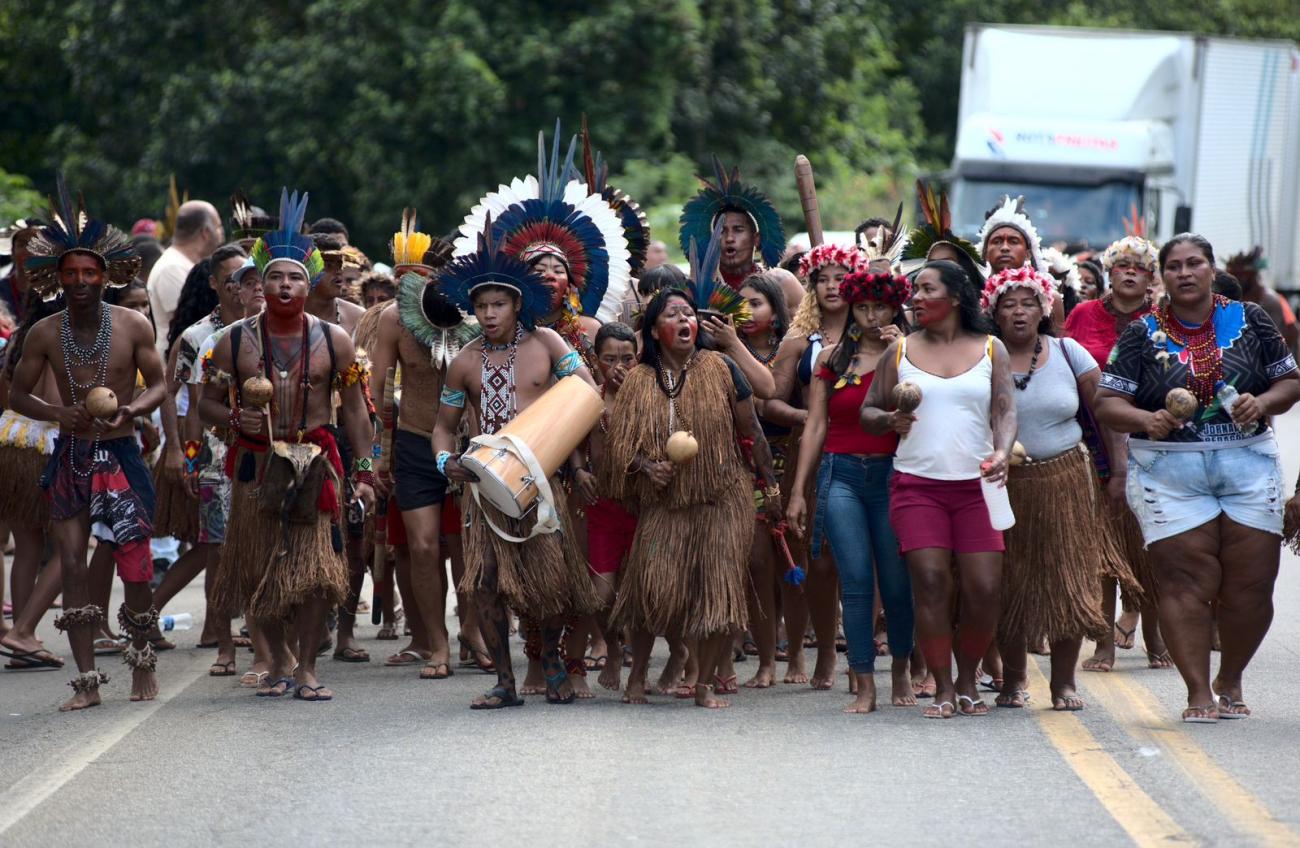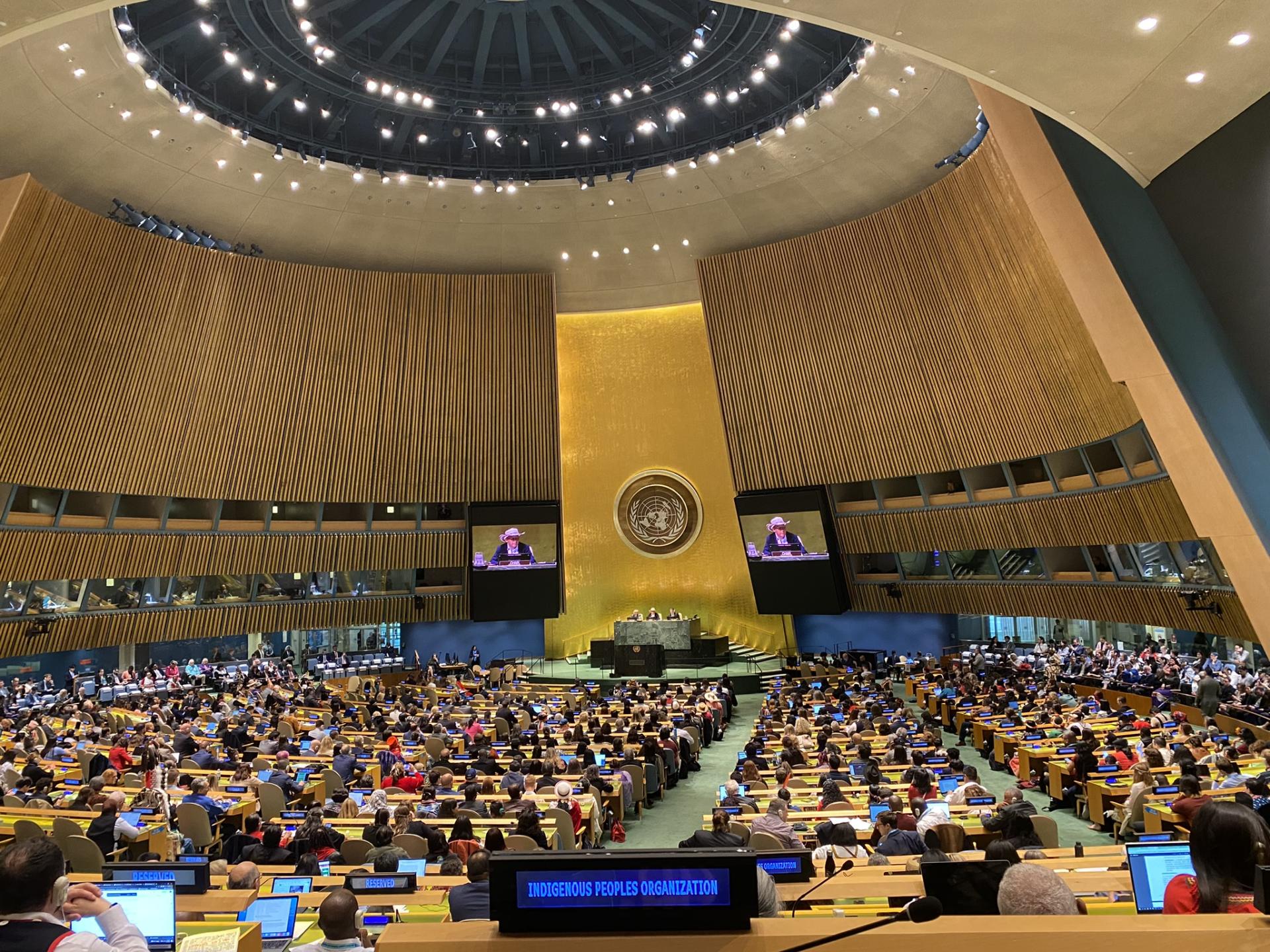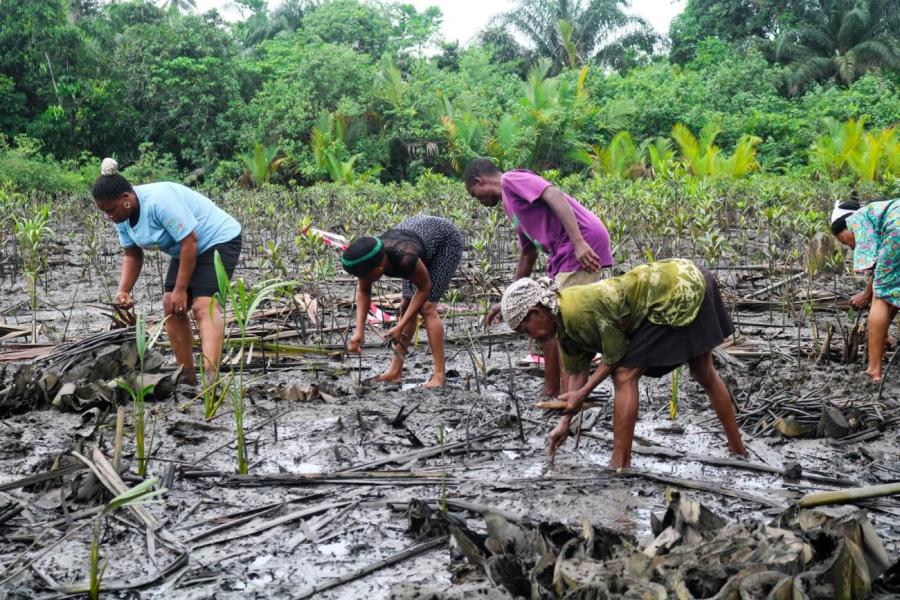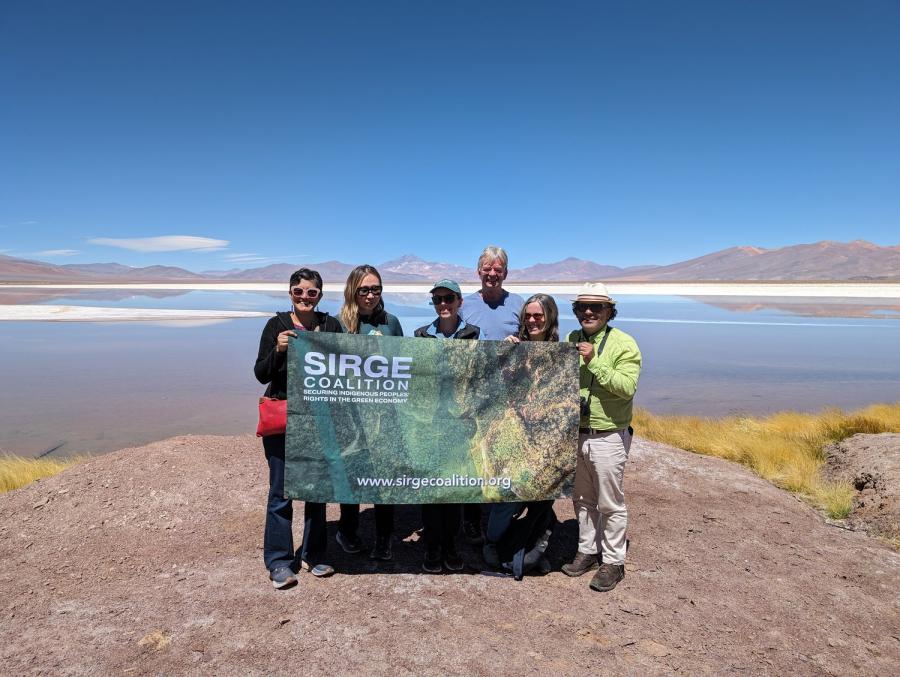
By Carlos Mamani Condori (Aymara)
Putting concepts such as decolonization and self-determination on the agenda is part of the legacy of the Indigenous Peoples’ struggles of the 1970s and 1980s. One of the most significant results of these efforts was the 1986 study by José Martínez Cobo, then Special Rapporteur of the UN Special Sub-Commission on Prevention of Discrimination and Protection at the United Nations Commission on Human Rights. This study was the culmination of a process of mobilization of Indigenous Peoples in the Americas, Europe, and Oceania for their recognition at the international level, particularly at the UN, where, along with the fight against racism and discrimination, decolonization was one of their most important tasks.
The report reads in part, “Indigenous communities, Peoples, and Nations are those who, having a historical continuity with the pre-invasion and pre-colonial societies that developed in their territories, consider themselves distinct from other sectors of the societies that now prevail in those territories or in part of them. They now constitute non-dominant sectors of society and are determined to preserve, develop, and transmit to future generations their ancestral territories and ethnic identity as the basis of their continued existence as a people, in accordance with their cultural patterns, social institutions and legal systems."
The signing of international instruments such as ILO Convention 169 and the UN Declaration on the Rights of Indigenous Peoples were based on the aforementioned study by Martínez Cobo, which defined the concept of Indigenous Peoples.
The treatment of the issues of Indigenous Peoples and Nations in the Americas, Europe, and Oceania by the UN through the Commission on Human Rights was the result of the coordinated effort of organizations such as the International Indian Treaty Council (IITC), the American Indian Movement (AIM), the North American Indian Brotherhood (NAIB), the Sami Council, the Centro de Coordinación y Promoción Campesina Mink'a, Movimiento Indio Tupak Katari (MITKA), and many others. These organizations participated in the International Conference of Indigenous Peoples, held in Port Alberni, British Columbia, on October 27-31, 1975, with the participation of delegates from Peoples and organizations from Argentina, Australia, Bolivia, Canada, Colombia, Ecuador, Finland, Greenland, Guatemala, Mexico, New Zealand, Nicaragua, Norway, Panama, Peru, Sweden, the United States, and Venezuela. The World Council of Indigenous Peoples (WCIP) was organized there, which promoted a global mobilization for the recognition of Indigenous Nations and their rights. At the invitation of the Saami Council, the Second General Assembly of WCIP was held in Kiruna on August 24-27, 1977, with the participation of delegates from Indigenous Peoples from the Americas, Europe, and Oceania, which adopted as fundamental principles:
- The right to self-determination;
- The right to maintain our culture, language, and tradition in freedom;
- The right to occupy the land collectively with exclusive, irrevocable, and non-transferable rights; and
- The right to organize ourselves and administer our land and natural resources.
The right to self-determination of Indigenous Peoples was the objective that led the group of leaders and organizations to seek recognition in the United Nations system. Thus, as the Indigenous delegates made their pilgrimage through the corridors of UN headquarters in Geneva, they connected with with African decolonization leaders such as Amilcar Cabral of the African Party for the Independence of Guinea and Cape Verde (PAIGG) of Guinea Bissau, leaders of the African National Congress (ANC), Southwest Peoples Liberation Organizatión (SWAPO), and political fronts from Angola, Mozambique, and Zimbabwe.
The international academic community provided crucial support by organizing meetings such as the symposium “Interethnic Friction in Non-Andean South America,” which took place on January 25-30, 1971, in Bridgetown, Barbados, also known as Barbados I. The Symposium was organized by the University of Berne in Switzerland and sponsored by the Anti-Racism Program of the World Council of Churches. Its outcomes were the "Declaration of Barbados I" and a report on the "Situation of the Indians of South America." Two subsequent meetings were held, Barbados II in 1977, where 18 Indigenous delegates participated, and Barbados III, which met in Rio de Janeiro in 1993. At the Barbados II meeting, a declaration was accompanied by a document entitled "No to the Racist Invasion," which denounced the plans for the resettlement of Rhodesian colonies from Southern Africa (Zimbabwe, Tanzania and South Africa) in the east of Bolivia as an escape from the decolonization drive that was developing in Africa.
Martínez Cobo's study was undoubtedly one of the most important results of that dynamic process of Indigenous struggles twinned with African liberation movements, whose manifestos guided the subscription of study documents and served as a frame of reference for the UN Working Group on Indigenous Populations in its process of drafting the UN Declaration on the Rights of Indigenous Peoples and the reform of Convention 107 by the ILO in 1986.
In order to understand the scope of the recognition of the category of people and, consequently, the right to self-determination, it is important to define both concepts in the light of international law. At the time of the European invasion of the continent known as the Indies, and later as America, the political development of Peoples was reflected both in terms of accumulated wealth and social justice. After the European invasion, colonialism, based on ideas of racial supremacy such as those promoted by Spanish philosopher and theologian Juan Ginés de Sepúlveda, considered Indigenous people to be barbarians by nature and, therefore, destined by nature to be slaves. Meanwhile, Spanish philosopher and theologian Francisco de Vitoria, in his treatise “De los títulos no legítimos de la conquista (About the Non-legitimate Titles of the Conquest),” demonstrated the illegitimacy and temporary nature of the Spanish occupation of the Indies. According to Mexican philosopher Mauricio Beuchot, the Spanish monarchy was obligated by natural law to prepare the occupied countries for a prompt political emancipation, as written in his 1992 book “La querella de la conquista: Una polémica del siglo XVI, (The Quarrel of Conquest: A Controversy from the 16th Century).” After the occupation of Qullasuyu-Tawantinsuyu, the Peoples, who were now called Indians by the colonial administration, consecutively sought to end the colonial regime. The most important resistance movements were those led by Túpak Katari (1780-1781), Zárate Willka (1899-1900), Santos Marka T'ula (1923-1924), and Eduardo Nina Quispe (1921-1927).
In 1916, Russian revolutionary, politician, and political theorist Vladimir Ilich Lenin published “The Socialist Revolution and the Right of Nations to Self-Determination,” where he argued the right of nations to self-determination, "exclusively their right to independence in the political sense, the right to free political separation from the nation that oppresses them.” A few months later, United States President Woodrow Wilson affirmed that each people has the right to choose the sovereignty under which they will live: "We believe in these fundamental things: first, that each people has the right to choose the sovereignty under which it will live.”
It was at the conclusion of World War II that the principle of self-determination developed dynamically. Article 1.2 of the Charter of the United Nations stated among its purposes promoting "friendly relations among nations based on respect for the principle of equal rights and self-determination of peoples." Resolution 1514 of the United Nations General Assembly of December 14, 1960, also known as the Declaration on the Granting of Independence to Colonial Countries and Peoples, had the clearest significance: “All peoples have the right of self-determination; by virtue of that right they freely determine their political status and freely pursue their economic, social, and cultural development.”
In the preceding paragraph, the resolution stated that the subjection of peoples to alien subjugation, domination, and exploitation constitutes a denial of fundamental human rights and is therefore contrary to the Charter of the United Nations and compromises the cause of world peace and cooperation. Since 1960, self-determination has become a fundamental principle of universal application, a right of all peoples and an imperative criterion of international law to put an end to colonialism. Since then, the doctrine of international law has assumed that the self-determination of peoples is a right of peoples subject to colonial and foreign domination and a necessary condition or prerequisite for the existence and enjoyment of all the rights and freedoms of the human person, as written by Uruguayan jurist, politician, and diplomat Héctor Gross Espiell in 1974 in "En torno al derecho a la libre determinación de los pueblos (Regarding the Right to Self-Determination of Peoples)" in the magazine Anuario español de derecho internacional. As for the citizens of colonial or dominated Peoples, the realization of the right to self-determination of a people "is an inescapable condition or prerequisite for the real existence of the other rights and freedoms of man. A people can only adopt the measures necessary to enshrine human dignity, the full enjoyment of all rights and the political, economic, social, and cultural progress of all human beings," Gross Espiell wrote.
However, it is important to go back to the adoption of the Universal Declaration of Human Rights (UDHR) on December 10, 1948. The Declaration is the first international human rights legal instrument that the universal international organization proclaimed "as a common standard of achievement for all peoples and all nations." Of importance is the reference to peoples and nations as actors in the promotion of rights and freedoms, to be applied both "among the peoples of member states and among the Peoples of territories under their jurisdiction." This latter notion is the harbinger of the process of decolonization.
The Declaration required that the rights and freedoms contained in its text acquire a fully binding legal value, which is why the UN Commission on Human Rights was given the task of drafting it. In the context of the Cold War, this task was very complicated, since the countries of the capitalist and communist blocs had very different views on the meaning of human rights. That is why, in 1966, two different covenants were adopted: the International Covenant on Civil and Political Rights (ICCPR) and the International Covenant on Economic, Social and Cultural Rights (ICESCR). However, both covenants share a common preamble and a common Article 1. Article 1 states: "All peoples have the right of self-determination. By virtue of that right they freely determine their political status and freely pursue their economic, social, and cultural development,” text almost identical to Resolution 1514.

Annual session of the UN Permanent Forum on Indigenous Issues.
It was from this perspective that the United Nations Declaration on the Rights of Indigenous Peoples Article 3 established: "Indigenous Peoples have the right to self-determination. By virtue of that right they freely determine their political status and freely pursue their economic, social, and cultural development."
However, in the negotiations during the drafting and adoption process, self-determination was interpreted, in the case of Indigenous Peoples, as a right of internal realization that does not affect the unity of States. Therefore, Article 18 establishes that Indigenous Peoples have the right to participate in all matters affecting their rights through elected representatives and decision-making institutions. Article 19, through Free, Prior Informed Consent, guarantees and ensures the right to participation and the enjoyment of all rights concerning Indigenous Peoples.
The right to autonomy as a realization of the right to self-determination of Indigenous Peoples in independent countries is stated in Article 1, b. of ILO Convention 169. It is an internal self-determination, referring to the form of internal political and economic organization of a people without affecting the external relations already established by the States. This was formulated in Article 7 of the Convention as "the right to decide their priorities," which in Article 4 of the United Nations Declaration on the Rights of Indigenous Peoples has a clearer foundation: "Indigenous Peoples, in exercising their right to self-determination, have the right to autonomy or self-government in matters relating to their internal and local affairs, as well as ways and means for financing their autonomous functions."
--Carlos Mamani (Aymara) is a professor at the Universidad Mayor de San Andrés (La Paz), a researcher and defender of the rights of Indigenous Peoples. He became known in the 1990s for his work promoting the ayllu system of government in Bolivia, an Indigenous method of land management that existed in pre-Inca times. For this reason, he was elected a member of the Ashoka Fellowship, a global network of social entrepreneurs dedicated to changing the world; He was a member (2008-2009) and president (2010) of the United Nations Permanent Forum on Indigenous Issues. Since then, Mamani has continued to work tirelessly to discover and disseminate knowledge about Indigenous cultures and is considered a world expert on the subject. He is a member of the Steering Committee of the Securing Indigenous Peoples’ Rights in the Green Economy (SIRGE) Coalition.
Photo: Pataxó Peoples in Brazil defending their self-determination and ancestral territory.



